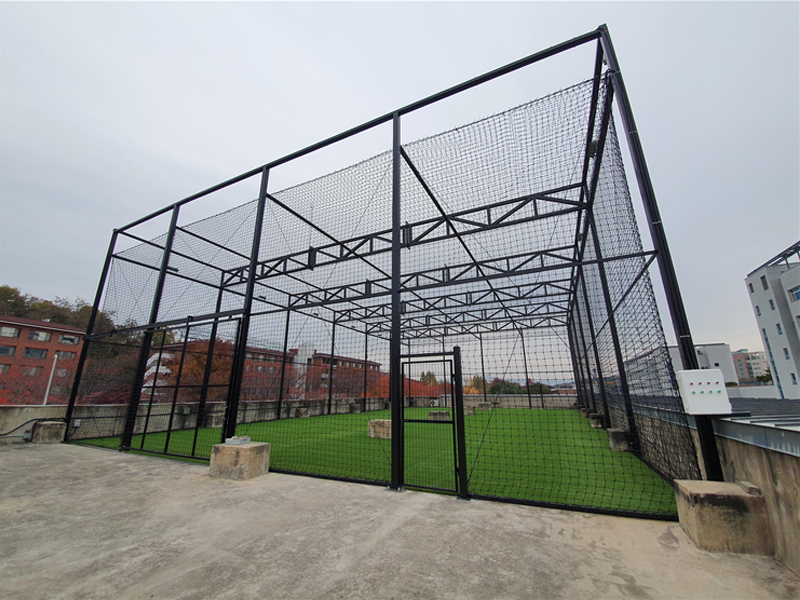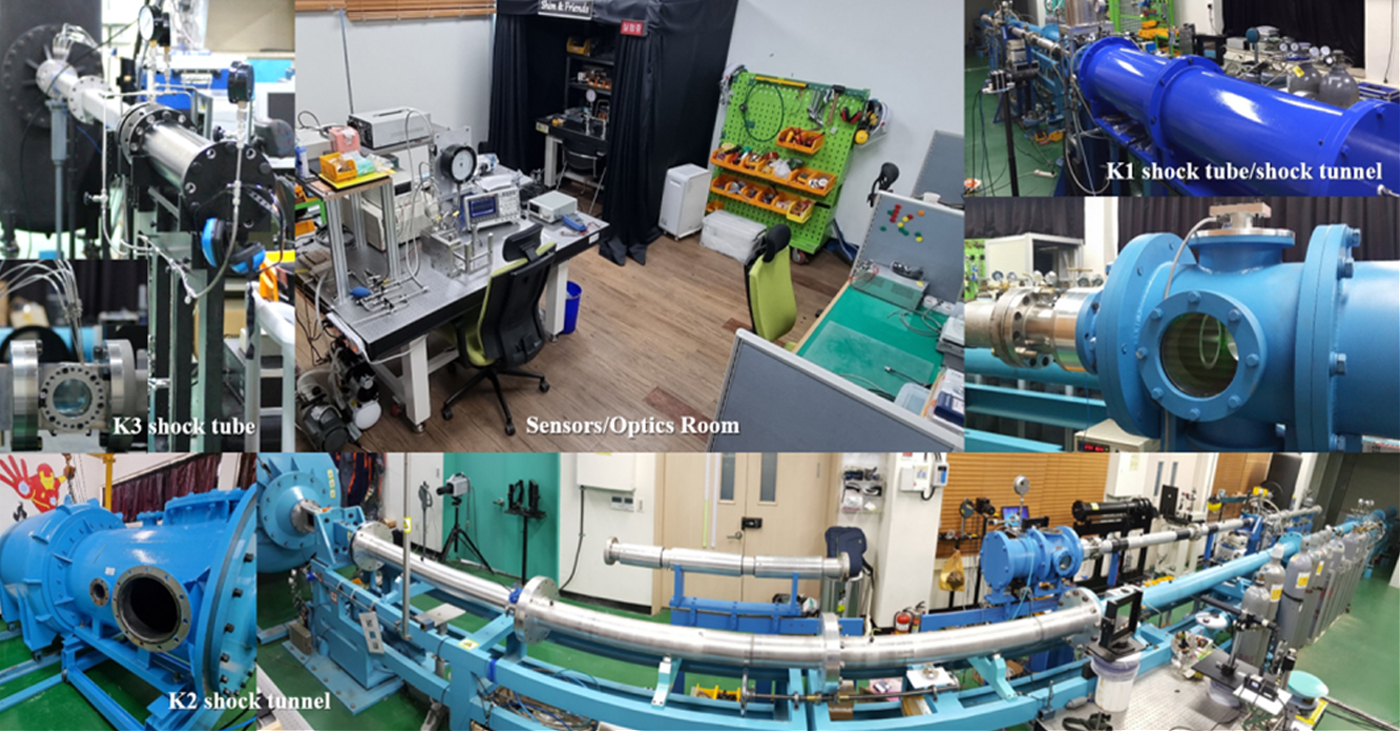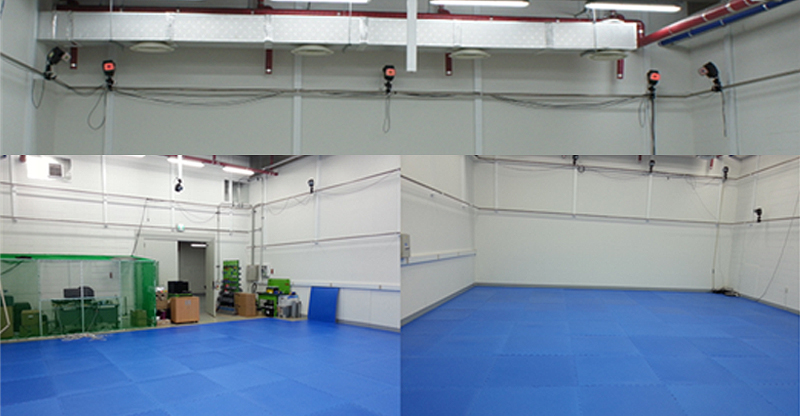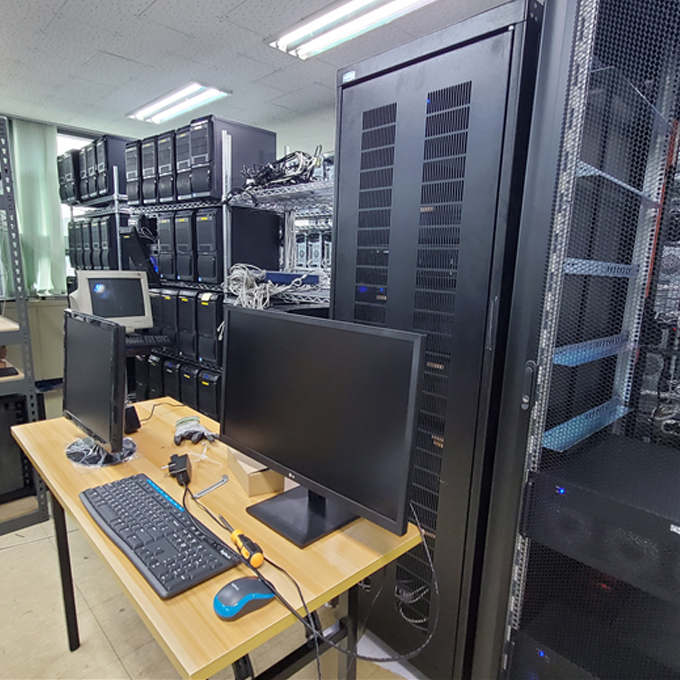Facility and Equipment
-
Drone Flying Zone (DFZ) [N7-5 Rootop]
- Drone Flying Zone (DFZ) is a drone-only flight infrastructure built as a joint-use facility on the N7-5 rooftop to meet the research demand related to drones in the era of air mobility.
- The facility contributes to securing competitiveness in drone research and innovation in aerospace education.

-
Space collaboration Lab[N7-2, 1308-3,4,5]
- It is built in the form of a wall-less Lab between space-related laboratories, providing a fusion experimental environment capable of developing space systems.
- It is expected to lead space technology innovation in the New Space era, which is characterized by rapid change and private sector participation.
-
Cluster room[N27 (Eureka Hall) 4106]
- It provides a high performance computing environment through continuous upgrade and introduction of new equipment with parallel computer clusters.
- It is used for large-scale calculation and simulation in various aerospace fields including computational aerodynamics and combustion modeling.
-
Subsonic Wind Tunnel [W10 (Wind Tunnel Experiment Building)]
- It is an equipment for simulating flow conditions in various speed ranges for measuring aerodynamic performance on the ground, and the specifications are as follows.
- Test section size
1,016 mm x 712 mm
- Operating mode
Open Loop, Suction Type
- Contraction ratio
7.2:1
- Speed operation range
10 ~ 70 m/sec
- Fan
150 HP (112 KW)
- Speed control method
Vane Control System (Reactor Type)

-
Small rocket engine test facility [Munji Campus]
- This is a small rocket engine test facility that can perform liquid propulsion engine tests that can be used for small space launch vehicles and educational science rockets.
- It is being operated together with the “Perigee-KAIST Rocket Research Center,” which was established with the KAIST Department of Aerospace Engineering and Perigee Aerospace, a start-up company for undergraduate students.
- Combustion tests of the methane engine used in the first stage (thrust 2.5 ton class) and upper stage (thrust 200 kgf class) of the small projectile under development, and the entanol engine (thust 150 kgf class) used in the KAIST 50th anniversary rocket have been conducted.

-
High-speed aerodynamic ground test equipment [W10 (wind tunnel)]
- Ground test equipment related to high-speed aerodynamics such as shock wave devices in the hypersonic laboratory is a ground test facility for simulating and studying heat/aerodynamic phenomena occurring in ultra-high-speed flow environments on a laboratory scale.
- It is working with various domestic and foreign industry-academy-research institutes to understand the high-speed flow phenomenon and ground experiment, and contributes to securing competitiveness in the field of high-speed aerodynamics and innovation in aerospace research.

-
KARPE (KAIST Arena w/ Real-Time Positioning Environment) [KI Bldg. E4 underground 016]
- It is a multi-purpose experimental space that tracks the position and speed of an object over time using a real-time motion capture system.
- This is an experimental space that can track changes in the position/velocity of an object over time. The specifications are as follows.
- Test space size
8.9 m x 12.3 m x 4.5 m
- Equipment
12 motion capture cameras
- Motion Capture Camera System
- Resolution – 1.3 million pixels (1280 x 1024)
- Frame Rate – 500~2000 FPS
- Shutter Speed – 30,000 Hz






